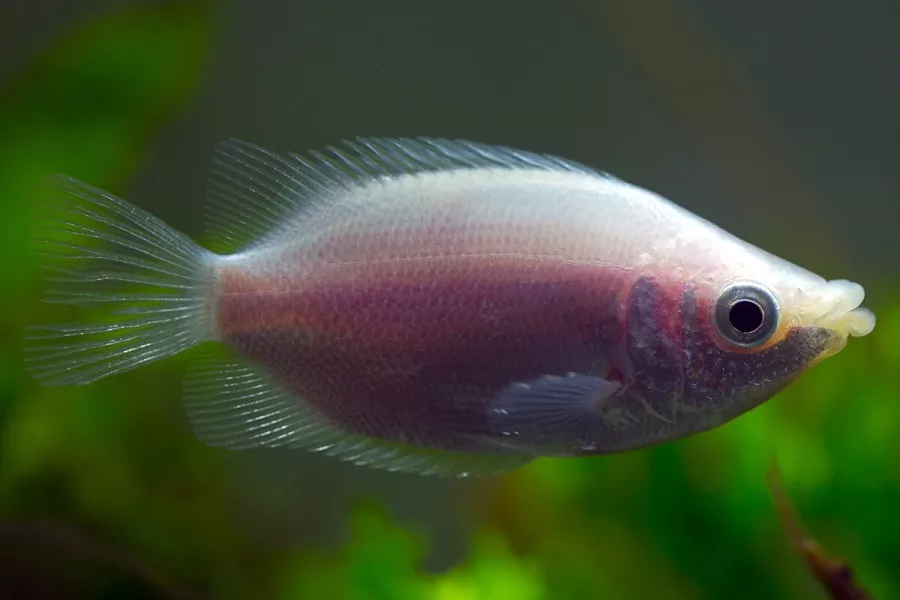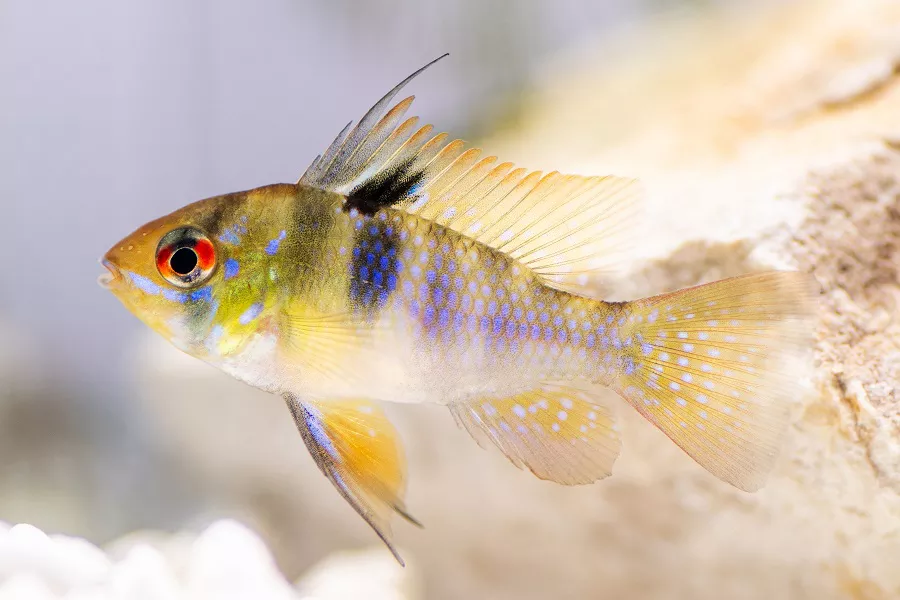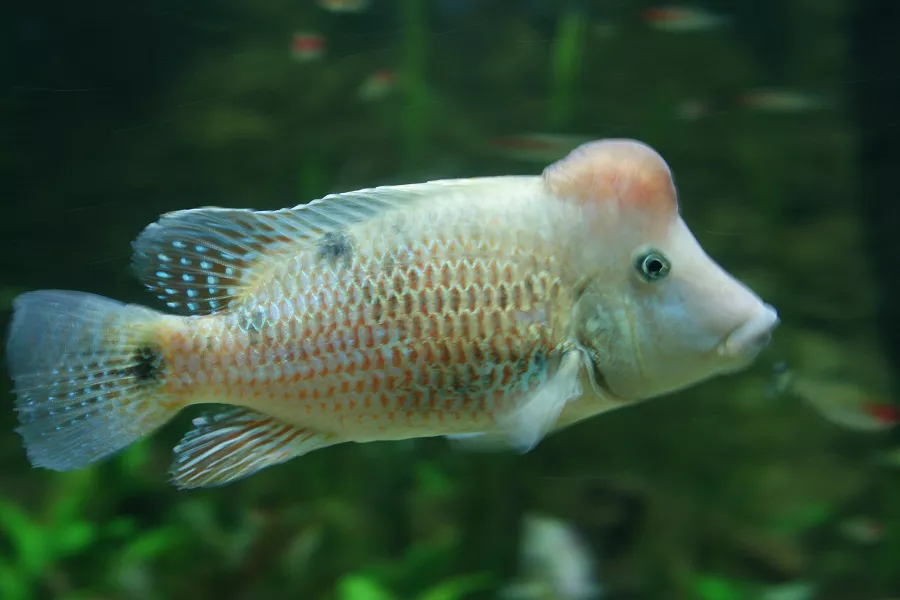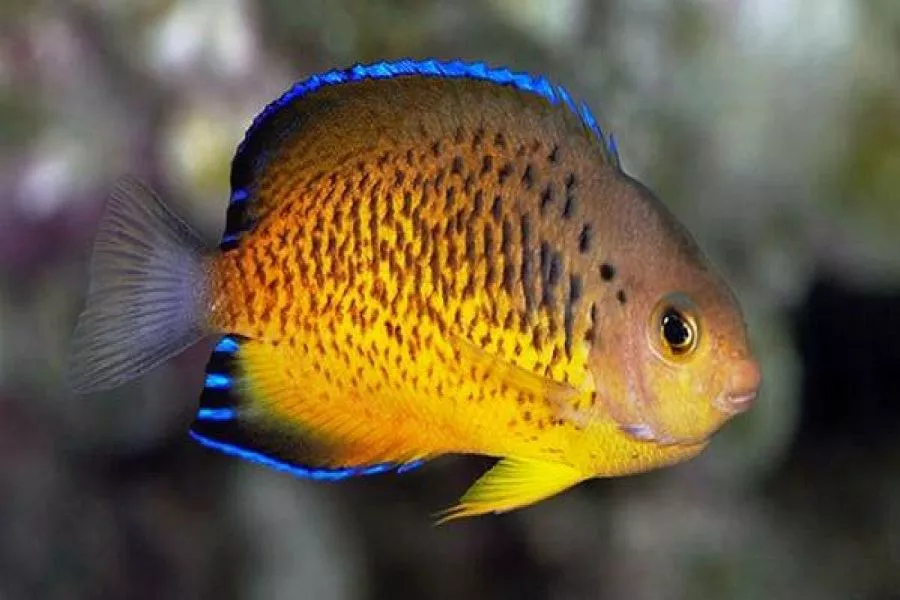What is kissing gourami?
Seabass (scientific name: Helostoma temminkii): wild fish are 20-33 cm long, and cultured fish are 3-5 cm long. Its English name is Kissing fish, which means kissing fish. For the common ornamental fish. The body of the fish is generally milky white or pale pink. There are also some perch all silver-grey or blue-green, and a few perch are white. The fins are transparent and slightly silvery.
The perch swims very slowly, looks graceful, and has charming charm and ornamental value. It is usually very docile and lively in temperament, so it is not suitable to be mixed with tropical fish that like quiet. It likes to swim in all layers of the water, but often stops at the bottom of the tank when resting. They also like to use thick lips to suck the moss on the walls of the feeding box and aquatic plants when raising fish, so when raising fish, they often put one perch as a “scavenger” in each box.
Perch is a small ornamental fish among the species of ornamental fish. It is famous for the fish like to “kiss” each other, which means that the love is long and it is loved by fish farmers. Not only the opposite sex fish even the same sex fish have “kissing” action, in fact, the “kissing” of the kissing fish is not a friendship expression, but a kind of fight. Native to Thailand, Indonesia, Sumatra, Borneo and Java in Southeast Asia.
What does kissing gourami look like?
Under natural conditions, the fish body length is 17-30 cm, and the body length of artificially cultured species is generally 3-5 cm. The fish body is oval or oblong. Lateral, large head, large mouth, especially red lips very hard, thick and large, no teeth on the upper or lower jaw, hundreds of small rust-colored mucous membranes covered with enamel like very fine serrations. The eyes are large, with red eye mask and yellow eye circles. Has smooth operculum and accessory operculum. The dorsal and round anal fins are particularly long, extending from the rear edge of the operculum to the caudal peduncle, and the middle of the rear edge of the caudal fin is slightly concave. There is an interrupted lateral line. The pectoral and pelvic fins are fan-shaped, and the caudal fin is triangular. Aquarium fish are generally milky white or pale pink. There are also some perch all silver-grey or blue-green, and a few perch are white. The fins are transparent and slightly silvery. Fish in the wild are grey to green with black stripes at the base of the caudal fin.
kissing gourami life habit
Under natural conditions, the fish body length is 17-30 cm, and the body length of artificially cultured species is generally 3-5 cm. The fish body is oval or oblong. Lateral, large head, large mouth, especially red lips very hard, thick and large, no teeth on the upper or lower jaw, hundreds of small rust-colored mucous membranes covered with enamel like very fine serrations. The eyes are large, with red eye mask and yellow eye circles. Has smooth operculum and accessory operculum. The dorsal and round anal fins are particularly long, extending from the rear edge of the operculum to the caudal peduncle, and the middle of the rear edge of the caudal fin is slightly concave. There is an interrupted lateral line. The pectoral and pelvic fins are fan-shaped, and the caudal fin is triangular. Aquarium fish are generally milky white or pale pink. There are also some perch all silver-grey or blue-green, and a few perch are white. The fins are transparent and slightly silvery. Fish in the wild are grey to green with black stripes at the base of the caudal fin.
kissing gourami rearing
Like its closely related species, bass does not build nests or care for its own fry. The fertilized egg attaches to the underside of the plant and takes about a day to develop into a seedling. The larvae swim freely for two days and stay in the floodplain for a short time. When the pups reach about 5-7 cm, they return to the slower waters by river, where they spend most of their life cycle.
Breed once a year. The mating system is promiscuous, with females starting to mate with only one male and laying eggs. They did not show a deliberate choice of any mate, nor did they maintain the same mate for future spawning. Perch are dioecious, oviparous, externally fertilized. Breeds at the beginning of the rainy season and lays eggs once a year. Adults migrate through rivers to shallow lakes or flooded forests to breed. The female begins to mate and flips upside down with the male, releasing eggs and sperm at the same time. Females release an average of 1,000 eggs. Eggs are generally smaller compared to other freshwater species and feature oil droplets to increase buoyancy. Fertilized eggs float on the water, usually attached to floating vegetation. Eggs develop into free-swimming fry two days later. Barramundi reach sexual maturity at 3-5 years of age.
Reminder: For more knowledge about tiger fish, arowana, australian lungfish, please pay attention to: mtedr.com, to provide you with types of aquarium fish and fish care.


























